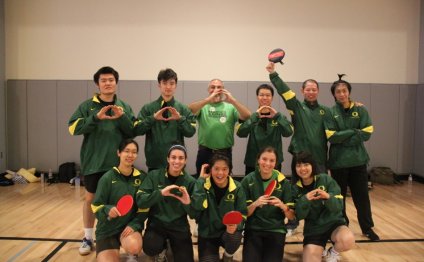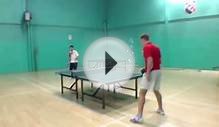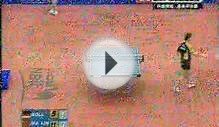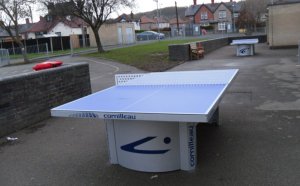
Competitive Table Tennis
|
Devising and using a tactic against an opponent is often key to winning, especially against an evenly matched opponent. Working an opponent's weaknesses and utilizing your own strengths can help you to defeat opponents who otherwise posses better strokes and footwork than you. The first step is to gather all the information you can about an opponent. Try to observe an opponent play a match against another player and ask yourself questions such as: How will I return each of their serves? How are they likely to return mine? What's their strength? Their weakness? Let's start by analyzing some of the more common styles of players.
How To Play Each StyleOf course, players may also be best described by the type of stroke (see definitions of the strokes) they favor and are most comfortable with. Generally, play one of these types in the following way: Counterdrivers - When playing a skillful counterdriver, avoid topspin rallies since this is their strength. Use heavy spin on both under- and topspin shots. Counterdrivers are most comfortable with light spin. If the opponent lacks good footwork, work the middle of the table. By forcing them to quickly decide between a forehand or backhand return, you can succeed in jamming them. Try using chops and pushes to slow down the game and rally for position. Choppers - When playing a chopper, be patient. Defensive choppers succeed when you become impatient and make mistakes. Alternate your use of shots, favoring deep loops, and short pushes. This will often throw the chopper off enough to return a high ball which you can put away with a smash. The chopper is likely to try to force you to make errors by using a variety of amounts of underspin. Expect the chops to vary from no spin to light spin to very heavy underspin. Finally, work the chopper down the middle more than side to side. The sides are often a chopper's strength while many have problems with shots hit down the middle. Move the ball in and out and use the drop shot, especially to their forehand side. Blockers - Blockers, just like choppers, are often defensive players. They try to get into a rhythm and move you out of position. As with the chopper, break their rhythm by varying the shots. Hit one deep and hard and then alternate with a short shot. Favor a high, spinny loop because blockers often like to use the power of their opponents to win points. Again, be patient, use just one power shot at a time, and sometimes trick the blocker into initiating an attack, in which they are usually weak. Loopers - When playing a looper, especially a consistent one, patience is out the door. Beat an aggressive looper with aggressiveness. Do all you can to initiate the attack. Your goal is to put the looper on the defense, where they usually are weak. As with choppers, work the middle to keep the ball away from their strength- the sides. Penholders - Penholders tend to heavily favor their forehand since the grip itself gives their forehand stroke a big advantage. The obvious strategy would seem to be to exploit their weaker backhand, but since many penholders display superb footwork, this is not as easy as it might seem. To work their backhand, you need to move the ball around, especially out wide. Do this in random fashion so they can't predict where you will direct the ball next. Tactics Against All OpponentsThere are a few general guidelines that hold true versus all styles of opponents. These include varying the spin and strokes and placing your shots. Varying Spin and Strokes
By varying the types of strokes, you force your opponent to deal with and adjust to various spins, speeds, and heights of the ball. This way, they must continuously read the spin and often react to your shots (and not initiate attacks). The other variation you should be using is ball placement, which we cover below. Ball Placement
By playing down the middle, you force your opponent to quickly decide between a backhand and forehand return- a tactic sometimes successful in itself to force a weak return. It also cuts down the angle they can play on their return. Shots out wide, on the other hand, test your opponent's footwork while moving them to either side of the table and possibly out of reach for a follow-up shot. As a general rule, try to find a weak zone and play it most often while randomly hitting to the two other zones for unpredictability. |
RELATED VIDEO



Share this Post
Related posts
Outside Table Tennis
KETTLER Axos 2 Outdoor Table Tennis Table Absolutely weatherproof sealed aluminum composite tournament top with proprietary…
Read MoreUmpire in Table Tennis
Recently an umpire called the score and the server served. The opponent said that he wasn t ready and the umpire called a…
Read More










